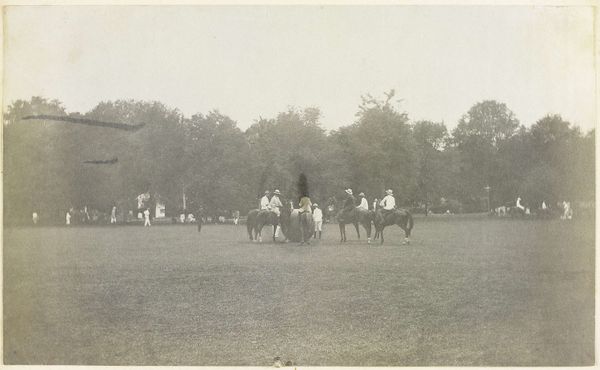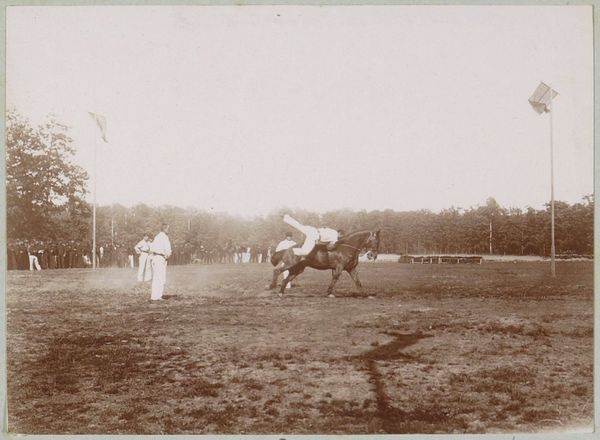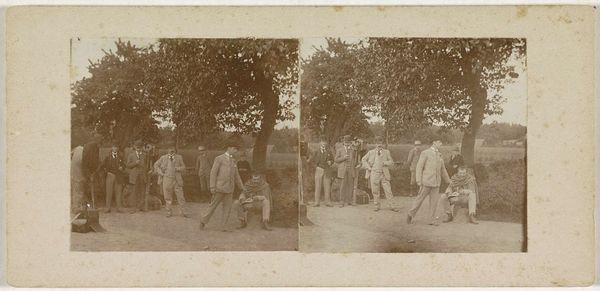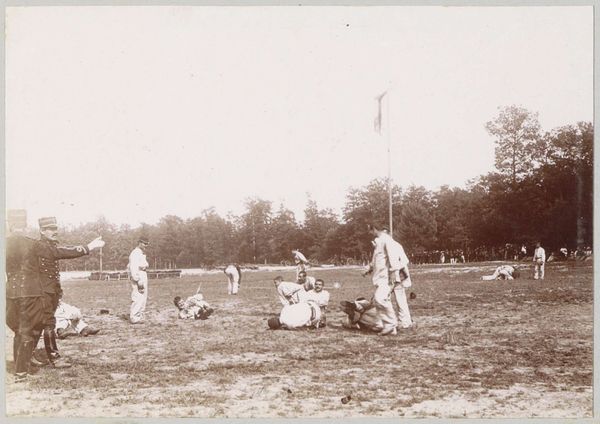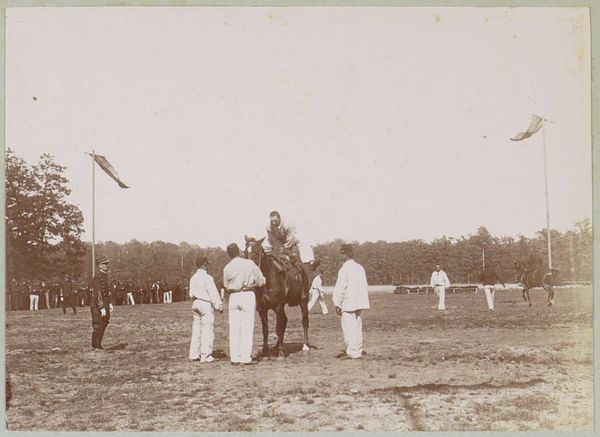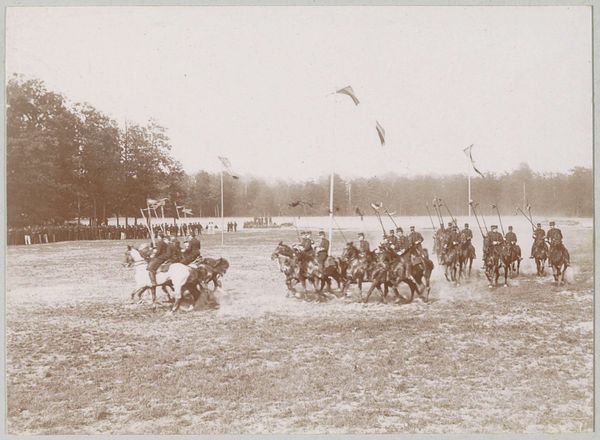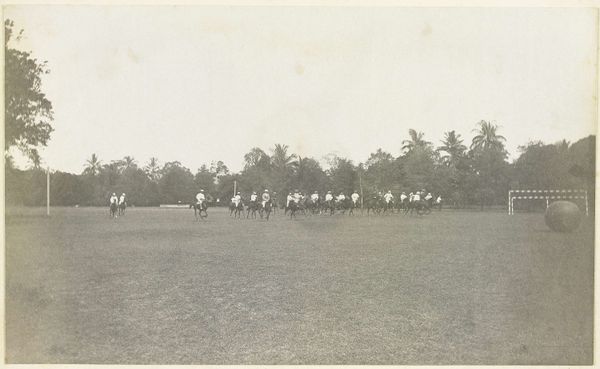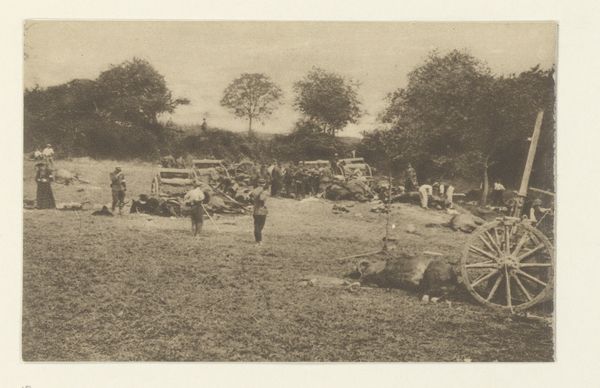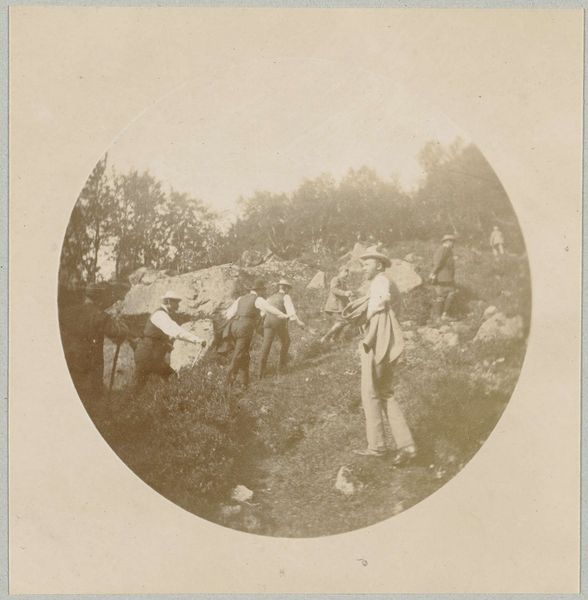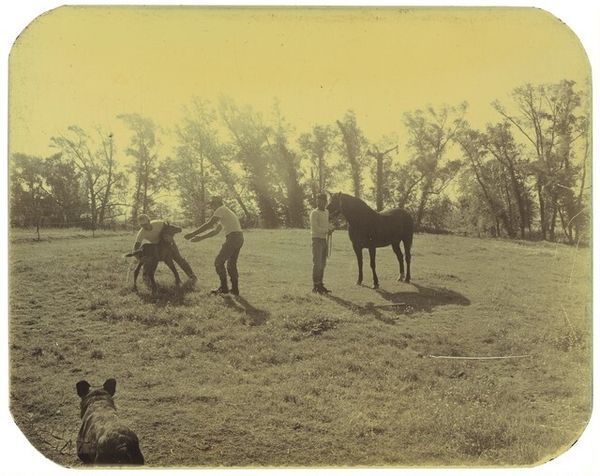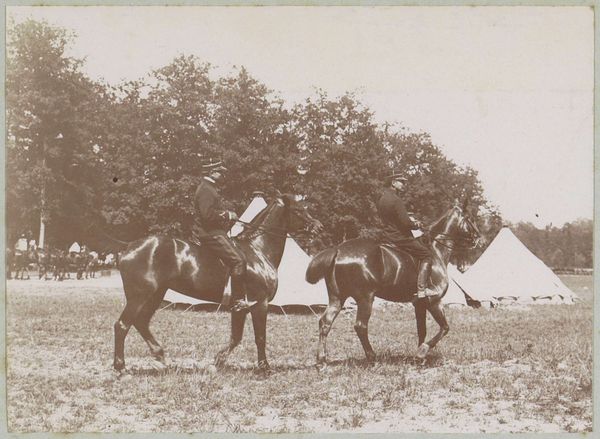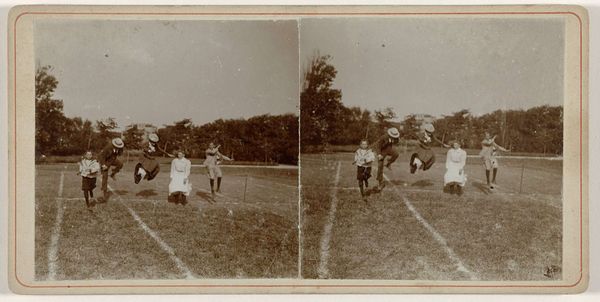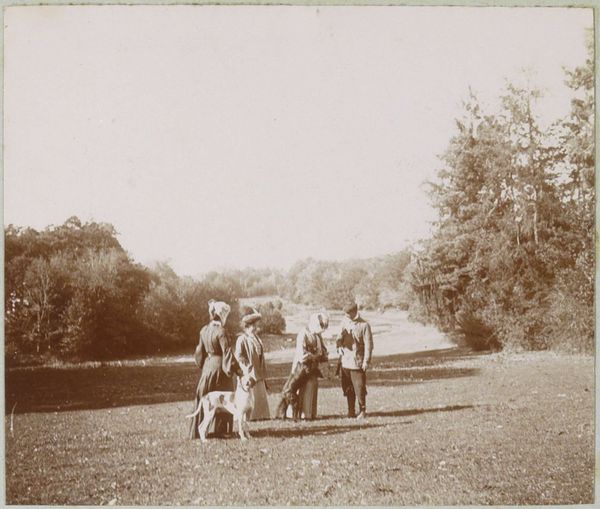
photography
#
16_19th-century
#
landscape
#
photography
#
genre-painting
Dimensions: height 76 mm, width 109 mm
Copyright: Rijks Museum: Open Domain
Editor: This is "Zaklopende militairen tijdens oefening te Fontainebleau," an 1896 photograph from the Rijksmuseum. It shows soldiers seemingly engaged in a sack race, of all things. The sepia tones lend a strange sense of nostalgia and maybe even humor. What strikes you most about this image? Curator: The materiality of the photograph itself is significant. As a 19th-century process, it reflects a specific point in the technological reproduction of imagery and therefore culture. I'm immediately drawn to the socio-economic context. Who produced this? Was it commissioned, and what was its purpose beyond, presumably, entertainment? Were these uniforms mass produced? The landscape itself, who had access to this land, what purpose did it serve at that moment? The relationship between labor, leisure, and military practice becomes apparent. Editor: That’s a fascinating perspective. I was focused on the sort of playful, unusual depiction of military figures. So, you see the making and use of the image itself as commentary? Curator: Absolutely. The photograph isn't simply capturing an event; it's a product of industrialization and social stratification. It reveals specific class relations. Notice, too, the implied labor to create and use the very material used for these silly sacks. The cloth isn’t readily available, or without a history of human endeavor and enterprise, from fields, and looms, to transport routes and marketplace exchanges. Editor: I hadn't considered the image itself as such an active element in a network of production! It opens a completely new way to interpret the scene. Curator: It's about questioning how materials, techniques, and socio-economic forces are interconnected, impacting both the creation and consumption of the artwork. Consider its function in our collection today; how far does its influence spread now? Editor: Thank you; that’s given me a lot to consider when viewing photography.
Comments
No comments
Be the first to comment and join the conversation on the ultimate creative platform.
